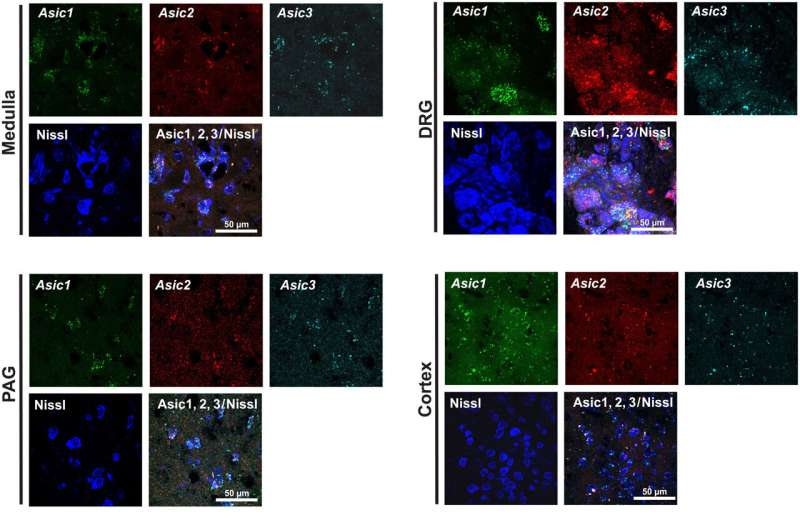October 5, 2023 report
This article has been reviewed according to Science X's editorial process and policies. Editors have highlighted the following attributes while ensuring the content's credibility:
fact-checked
peer-reviewed publication
trusted source
proofread
Mice experiments show early life adversity mental problems can be passed down three generations

A combined team of psychiatrists and brain researchers from the University of Toronto and Québec Mental Health Institute in the Canada, working with a colleague from the National Research Council's Institute of Biochemistry and Cell Biology, in Italy, has found that neurological problems associated with early life adversity (ELA) can be passed down at least three generations in mice.
In their study, reported in the journal Science Advances, the group conducted experiments with mice to learn more about ELA and a drug they tested to prevent the problem.
Prior research has shown that early life adversity can result in emotional and behavioral problems in both humans and mice. Prior research has also shown that such problems can be traced to changes in neurological functioning and can last a lifetime. In this new effort, the researchers took a closer look at ELA in mice to learn more about how it causes such problems and ways to fix the problems once found.
This involved subjecting mice pups to ELA—they took them away from their mothers and placed them with foster moms, and then repeatedly moved them to new foster moms every day for four days during the first week of life. The research team then tested the mice as they grew and reproduced.
They found heightened levels of the proteins encoded by the ASIC1, ASIC2 and ASIC3 genes in the periaqueductal gray matter and in the medulla oblongata—both of which are known to be involved in processing sensory pain. They also found that the mice were more sensitive to pain as adults and exhibited social and behavioral problems compared to control mice—and they tended to hyperventilate when exposed to CO2-enriched air.
![RCF is associated with altered homeostatic responses trigenerationally (data are represented as means + SEM).(A) Association (n = 77) between 6% CO2-air breathing and higher Vt compared to air breathing (Hotelling's trace F1,65 = 159.0, P ≤ 0.0001), with interaction between lineage (RCF/CT) and Vt during 6% CO2 breathing (Hotelling's trace, F1,65 = 21.82, P ≤ 0.0001) by repeated-measures analyses of variance (ANOVA-R). There were no other significant associations owing to generation (F0, F1, and F2), sex, or any possible combinations of the predictors. (B) Association (n = 102) between shorter latency of paw withdrawal at thermal stimulation (Hargreaves' test) and the RCF lineage (F1 =199.70, P ≤ 0.001) by univariate GLM (F11 = 22.36, P ≤ 0.001). There was also an association with generation (F0, F1, and F2: F2 = 8.09, P ≤ 0.001): Tests of within- and between-groups' variance decomposition showed that the latter, generation effect was caused by a local increase in paw withdrawal latency among F1-CT animals and revealed no lineage-by-generation interaction and no significant effect in multiple comparisons of between-generations' effect (by Scheffe's tests). No other significant associations owing to sex or to interactions among any of the independent variables emerged, including lineage-by-generation interaction. (C) Association (n = 81) between shorter latency of paw withdrawal at mechanosensitive stimulation [simplified up-down (SUDO)–von Frey's test] and the RCF lineage (F1 = 62.26, P ≤ 0.001) by univariate GLM (F11 = 7.99, P ≤ 0.001). *P < 0.05, ***P < 0.001. There was also an association (D) with female sex (F1 = 4.01, P ≤ 0.05) but no other significant associations owing to generation (F0, F1, and F2) or interactions among any of the independent (lineage, generation, and sex) variables. Credit: Science Advances (2023). DOI: 10.1126/sciadv.adi8750 Mice experiments show early life adversity mental problems can be passed down three generations](https://scx1.b-cdn.net/csz/news/800a/2023/mice-experiments-show.jpg)
As the mice grew older and were allowed to mate and produce offspring, the researchers tested the offspring, as well. They found heightened levels of the same proteins, which very strongly suggested that neurological problems associated with ELA can be passed down to offspring. The research team also found the same heightened levels of the same proteins in the third generation of mice.
The researchers also attempted to treat the malady by giving all three generations of mice the drug amiloride, which is known to reduce levels of proteins encoded by the ASIC1, ASIC2 and ASIC3 genes. They found that doing so not only reduced such levels but also reduced the physical symptoms the mice had been exhibiting.
More information: Marco Battaglia et al, Enhanced harm detection following maternal separation: Transgenerational transmission and reversibility by inhaled amiloride, Science Advances (2023). DOI: 10.1126/sciadv.adi8750
© 2023 Science X Network



















